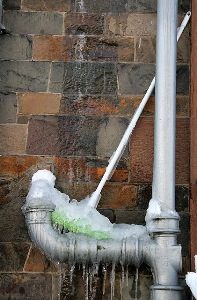
Frozen pipes are preventable by evaluating areas of vulnerability throughout the home and taking certain precautions. Implementing the following winterization tips now can help avoid headaches later:
- Search your house for uninsulated pipes, especially in unheated areas. Consider wrapping pipes with electric heating tape, but follow manufacturer’s instructions carefully to avoid a fire hazard.
- Seal cracks and holes in outside walls and foundations with caulking, especially where cable TV or phone lines enter the house, to keep cold winds away from pipes.
- If your home is heated by a hot-water radiator, bleed the valves by opening them slightly. Close them when water appears.
- Make certain the water to your hose bibs is shut off inside your house (via a turnoff valve), and the lines are drained.
- Drain and shut off entirely the water to any unoccupied residence such as a summer or vacation home. A loss of power during a winter storm could cause pipes to freeze. If you intend to leave a property entirely without heat, be sure to drain all water to prevent the possibility of frozen pipes.
- Set the thermostat at 55 degrees if you’re going out of town. Although you may be able to get away with a lower temperature, this setting is considered to be safe for pipes.
- Consider wrapping your water heater in an insulation blanket. While not really at danger for freezing, this can lower your heating bills.



